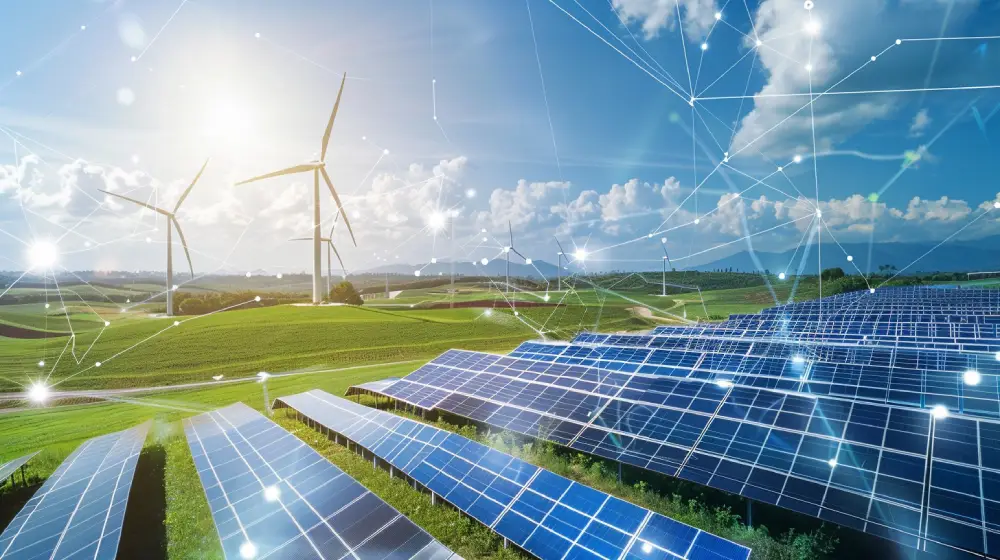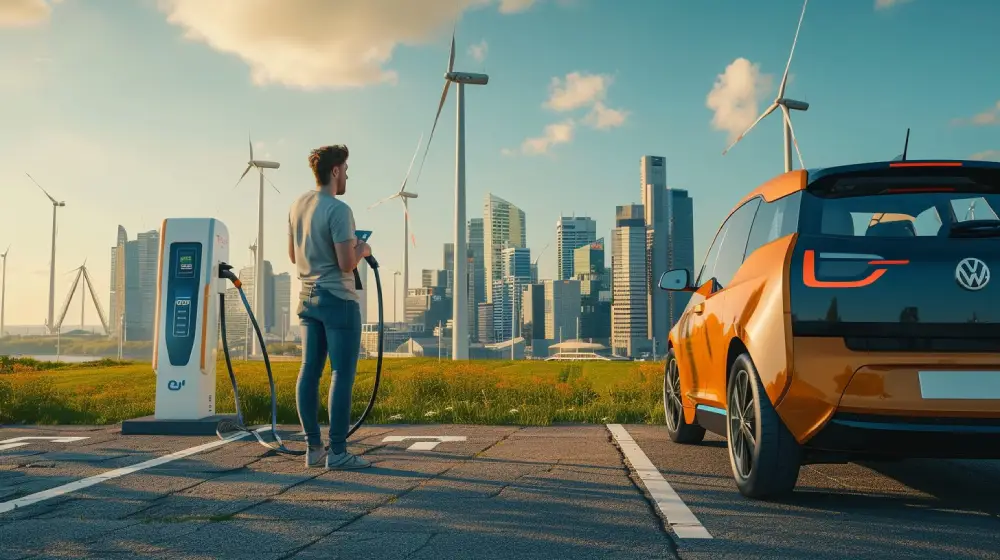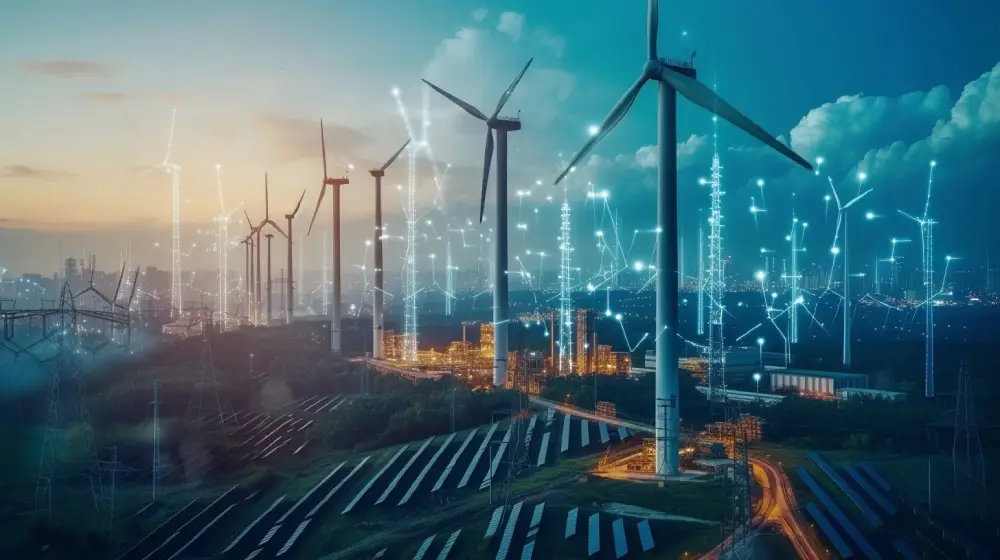Sustainable technology is a vital tool for facing environmental challenges. By using innovation, we can reduce pollution, conserve resources, and create a healthier planet for future.
These technologies offer solutions to pressing issues such as climate change and resource reduction while also motivating economic growth.
Sustainable technology promotes social equity by securing access to clean energy and resources for all. It also fosters innovation and job creation in emerging green industries.
Why is sustainable technology so important right now? Because it is crucial for our world’s survival. Our world is facing environmental crisis, with pollution and climate change threatening life as we know it.
Sustainable technology offers innovative solutions to these challenges by providing cleaner energy, reducing waste, and preserving natural resources. It’s essential for creating a healthier and more sustainable future.
Sustainable technology improves quality of life while protecting the world. By providing clean energy, sustainable food sources, efficient waste management, preserving natural resources, and supporting sustainable use practices it creates a healthier environment and promotes sustainability.
What is Sustainable Technology

Definition and Core Principles
Sustainable technology is defined as the development and use of innovations that prefer environmental health, economic viability, and social equity.
By focusing on resource efficiency, renewable energy, waste reduction, and minimum environmental impact, it aims to create technologies that benefit both people and the environment.
A crucial aspect is considering the entire lifecycle of a product, from production to disposal, to ensure its overall sustainability.
Examples of Sustainable Technologies:
Renewable energy sources
Solar, wind, hydro, geothermal power
Energy-efficient appliances and buildings
LED lights, smart thermostats
Electric and hybrid vehicles
Reducing carbon emission and air pollution
Waste reduction technologies
Recycling, composting, waste management, waste-to-energy
Sustainable agriculture
Precision farming, regenerative farming, e-farming, organic methods
Water-saving technologies
Rainwater harvesting, drip irrigation
Green building materials:
Recycled content, low-VOC paints
Importance and Impact on the Environment and Society
Sustainable technology is a driver for environmental, economic, and social progress.
By switching to cleaner energy sources and adopting resource-efficient practices, we can improve air quality, create jobs, and improve overall well-being.
This approach promotes a thriving society while protecting our precious biodiversity and the environment.
Types of Sustainable Technologies
Sustainable technologies are innovative solutions aimed at protecting our planet while improving human life. Here are some main areas:
Energy Solutions
- Renewable Energy: Capturing power from the sun, wind, water, and Earth’s heat.
- Energy Storage: Developing ways to save energy for later use, such as batteries.
- Smart Grids: Efficiently managing electricity flow for less waste.
Clean Living
- Recycling and Waste Management: Turning trash into treasure and reducing landfill waste from discarding computers or littering etc.
- Green Buildings: Designing homes and offices to save energy and be eco-friendly.
- Sustainable Transportation: Electric cars, bikes, and public transport for cleaner cities.
Food and Farming
- Sustainable Agriculture: Growing food in ways that protect the environment and achieve the main goal of sustainable agriculture.
- Food Waste Reduction: Preventing food from being thrown away.
- Lab-Grown Meat: Creating meat without harming animals.
Water Saving
- Water Conservation: Using water wisely to save this precious resource.
- Water Purification: Cleaning dirty water for safe drinking.
- Water Harvesting: Collecting rainwater for use.
These are just a few examples. Sustainable technology is a growing field with endless possibilities.
What are Sustainable Technologies

Sustainable technologies are innovative solutions aimed at protecting the environment and conserving resources.
These innovations span various sectors, including energy, building, waste management, and water treatment.
By using renewable energy, building sustainably, recycling efficiently, and securing clean water access, we can create a healthier and more resilient world.
Renewable Energy Technologies
Renewable energy uses the power of nature to generate electricity. Solar panels capture sunlight, wind turbines capture wind power, and hydropower uses the force of moving water.
These clean and sustainable energy sources offer a good alternative to fossil fuels.
Green Building Technologies
Green buildings are environmentally friendly structures designed to reduce resource consumption.
By using sustainable materials, energy-efficient systems, and waste-reducing strategies, these buildings significantly reduce their environmental impact.
For example, green buildings can consume up to 30% less energy and produce 35% fewer emissions compared to traditional buildings.
Sustainable Agriculture Technologies
Sustainable farming uses clever ways to grow food that are good for the environment, assuring food security, and help farmers make a living.
Methods such as precision farming use GPS and special tools to get the most out of each field, which can grow more food and use less water and other resources.
Organic farming avoids using synthetic pesticides and fertilizers, which helps keep the soil healthy and promotes healthy biodiversity.
Waste Management Technologies
Waste management technologies are designed to handle, process, and recycle waste in environmentally friendly ways. These technologies include recycling systems, composting methods, and waste-to-energy processes.
For example, some new recycling plants can handle all sorts of materials, turning them back into things we can use again, which means less litter ends up in landfills.
Clean Water Technologies
Clean water technologies focus on providing safe and sustainable water supply and treatment solutions. Innovations such as water filtration systems, desalination plants, and wastewater treatment technologies are important in addressing the global water crisis.
The World Health Organization says over 2 billion people don’t have clean water to drink, especially people near polluted river, which shows the importance of clean water technologies.
Real-World Case Studies
- Masdar City, Abu Dhabi: A planned city focused on sustainability and renewable energy.
- The Bullitt Center, Seattle: A commercial building recognized for its green design and operations.
- The Eden Project, Cornwall, UK: A botanical garden showing sustainable architecture and education.
Comparative Analysis of Different Technologies
Selecting the best sustainable technology involves considering factors such as efficiency, cost, and suitability.
Different technologies outperform in specific environments and applications.
For example, solar panels are well-suited for urban areas, while wind turbines are more efficient in open spaces.
Similarly, recycling and composting offer more solutions for different types of waste.
Finally, the most effective choice depends on the specific needs and conditions of a given situation.
Sustainable Tech Solutions Across Industries

E-waste, can be really harmful if thrown away in the trash. There are ways to recycle e-waste and get rid of it safely. That’s where sustainable technology comes in and by using sustainable e-waste management practices, we can greatly reduce the impact of electronic devices have on the environment.
E-farming helps farmers be more productive by providing precise data on soil health, weather patterns, and crop conditions. This allows farmers to make informed decisions, resulting in higher productivity and lower environmental impact. It also reduces the need for chemical inputs, promoting sustainable farming.
Sustainable technologies are reducing the environmental impact of open-pit mining. By using advanced exploration methods such as satellite imagery and geophysical surveys, mining companies can reduce the land area disturbed.
Minting NFTs can be energy-intensive, but sustainable technology is offering solutions! Blockchains that use proof-of-stake validation (Tezos or Cardano) require significantly less energy than traditional proof-of-work systems as Ethereum.
Also, NFT artists can choose platforms that offset carbon emissions associated with minting, or use energy-efficient computing resources to reduce their environmental footprint.
Drones can monitor animal populations and track illegal poachers from the air. Camera traps capture wildlife activity and identify endangered species. Advanced sensors detect environmental changes that might threaten habitats.
By using these tools, conservationists can work smarter, protecting animals more effectively and efficiently.
Collars with GPS can track where animals go, and even let authorities know if they leave protected areas. There are also special bullets that record when and where an animal is hunted, which helps discourage people from hunting illegally and makes it easier to catch them if they do, providing evidence for prosecution.
This cool tech helps keep hunting legal and protects wild animals, promoting wildlife conservation efforts.
- Monitoring and Tracking: Underwater drones and sensors can monitor water quality, track pollution sources, and map fragile ecosystems. This real-time data helps identify and address problems before they worsen.
- Aquaculture Innovation: Sustainable fish farming techniques such as closed-loop systems and recirculating aquaculture systems can reduce pollution and protect wild fish populations.
- Ocean Energy: Using renewable energy sources such as tidal power and wave energy can lessen our reliance on fossil fuels, reducing greenhouse gases that contribute to ocean acidification.
- Anti-Poaching Solutions: Sonic monitoring systems can detect illegal fishing activity, while satellite tracking of vessels helps authorities implement regulations and protect endangered marine species.
The Future of Sustainable Technology

Emerging Trends and Future Prospects
The future of sustainable technology is hopeful. Improvements in smart grids, electric vehicles, and energy storage are ready to modernize the way we consume and produce energy.
These innovations will contribute to a cleaner, more efficient, and sustainable future.
Innovations and Advancements
Recent improvements in sustainable technology are encouraging. Breakthroughs in energy storage, water filtration, and building materials are driving progress towards a more sustainable future.
Solid-state batteries, graphene-based water filters, and cross-laminated timber are examples of innovations that offer improved performance and reduced environmental impact.
Policy and Rules Help for Sustainable Tech Growth
Government policies and international agreements are essential for promoting sustainable technology adoption. Rewards such as tax breaks and financial support for renewable energy and electric vehicles encourage widespread use.
Collaborative efforts, illustrated by the Paris Agreement, create a good environment for innovation and the development of sustainable technologies.
Predictions for the Future
The future of sustainable technology is bright. By 2030, renewable energy sources like solar and wind power are projected to significantly increase global electricity generation, reducing reliance on fossil fuels.
Improvements in energy storage and grid management will further improve the reliability and accessibility of clean energy.
Final Impression
This article explored the importance of sustainable technology in facing environmental challenges. We examined various types of sustainable technologies, their applications, and their impact.
By understanding the benefits and comparing different approaches, we gained ideas into the potential of sustainable technology to create a healthier world.
Also we discussed the importance of supportive policies and the promising outlook for future improvements in this field.
This article has provided valuable ideas into sustainable technology. To learn more, explore related articles on our website. Share this information to inspire others to join the movement towards a sustainable future.




